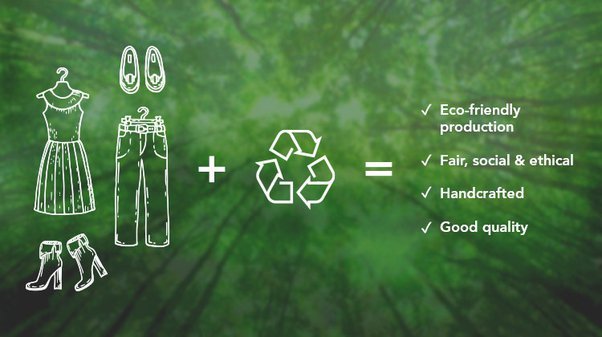
Understanding Sustainable Fashion
Sustainable fashion is the heartbeat of this transformation, steering fashion products and the entire fashion system towards a brighter future—one that champions ecological harmony and social justice. It’s not just about what we wear; it’s about the impact our choices make on the world We share a range of environmentally beneficial techniques that are embraced by sustainable fashion, such as the use of recycled and organic materials, the adoption of moral production practices, and a deliberate effort to reduce waste The ultimate objective here is not just about creating stylish clothing but doing so in a way that minimizes harm to the environment and champions fair treatment for every worker involved in the supply chain.
Impact of Fast Fashion
The rise of fast fashion has unleashed a tidal wave of clothing production, leaving in its wake a troubling trail of environmental harm and the exploitation of labor. It’s a stark reminder that our passion for quick trends can come at a significant cost—both to the planet we call home and to the individuals working behind the scenes. We’re at a crossroads where the choices we make about what we wear can either perpetuate this cycle or pave the way for a more conscious and compassionate fashion journey. The craving for affordable, throwaway fashion has given rise to a culture of excess, leading to increased pollution, greenhouse gas emissions, and waste. However, in the face of growing awareness about these concerns, consumers are actively on the lookout for alternatives that resonate with their values.
Innovations in Sustainable Fashion
As the call for sustainable fashion gains momentum, many brands are stepping up with bold initiatives. They’re diving into the realm of innovative technologies and materials, pushing boundaries to shrink their environmental footprint.
From organic cotton and hemp fabrics to biodegradable packaging and zero-waste production methods, the industry is transforming into more eco-conscious solutions. Additionally, upcycling and recycling initiatives are gaining significant traction, further promoting a circular fashion economy.
Ethical Production and Fair Trade Practices
Investing in high-quality, multifunctional garments enables consumers to build a more sustainable wardrobe, promoting confident, conscious consumption and reducing the pressure to constantly update one’s closet.
Embracing Timeless Style and Versatility
A key aspect of sustainable fashion is confidently shifting towards timeless style and versatile pieces that can withstand trends and seasons. By investing in high-quality, multifunctional garments, consumers can construct a more sustainable wardrobe that transcends fleeting fashion fads. This approach promotes confident, conscious consumption and reduces the pressure to constantly update one’s closet.
The Role of Circular Economy
Picture sustainable fashion as this vibrant ecosystem, with the concept of a circular economy taking center stage. It’s like a bold declaration that echoes through the fabric of our choices, underscoring the crucial need to cut down on waste and stretch the lifespan of our clothing. In this fashion narrative, it’s not just about what’s in vogue today; it’s about creating a timeless cycle where our clothes are cherished, repurposed, and woven into a sustainable tapestry that respects both style and the environment. This involves practices such as clothing rental services, clothing swaps, and second-hand shopping. Embracing a circular fashion mindset confidently encourages reusing and repurposing garments, ultimately reducing the overall environmental impact of the fashion industry.
Educating and Empowering Consumers
It’s not just about the clothes we wear; it’s about understanding the impact of our choices. Imagine it as a journey where each purchase becomes a conscious step and every wearer is an informed advocate for a fashion world that’s both stylish and sustainable. Providing resources and information about sustainable brands, materials, and practices can help individuals make more informed purchasing decisions. Furthermore, advocating for policy changes and industry regulations can confidently drive systemic improvements in the fashion supply chain.
The Intersection of Fashion and Activism
Sustainable fashion is not just a trend; it is a form of activism that boldly advocates for a more equitable and environmentally conscious industry. By confidently supporting sustainable brands and initiatives, consumers can actively participate in shaping the future of fashion. This intersection of fashion and activism underscores the powerful influence of individual choices in driving meaningful change.
Conclusion
The rise of sustainable fashion represents a pivotal shift in consumer behavior and industry practices. By confidently prioritizing environmental stewardship, ethical production, and conscious consumption, individuals can significantly contribute to a more sustainable and equitable fashion landscape. As the movement continues to evolve, it boldly holds the potential to redefine the entire fashion industry, making it more responsible and responsive to the needs of both people and the planet.